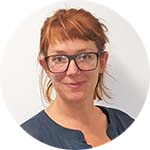After completing my Farmington Scholarship, I was ready for the next step in my journey – to have influence beyond my classroom and school. The Culham St Gabriel’s leadership programme was an excellent opportunity to build networks and with the online webinars and meetings there was a lot of flexibility.
The programme was a balance between developing literary insight through the different modules and channelling your strengths as a leader to hone and cultivate new skills. My mentor (Olivia Seymour) was amazing – not only did she help me to recognise my own strengths and achievements, but she also reined me in when I went off on tangents.
The programme has provided me with opportunities to consult with people across the country – dipping in and out of expert knowledge, developing and sharing ideas and resources.
As with anything new, initially I felt a little overwhelmed, especially with the reading. However once I found a balance the exploration of new materials became the key to my motivation.
The most crucial aspect to leadership in Primary school is not strategic plans but emotional literacy. A leader must have the emotional literacy to inspire others in developing what they do, without adding to the day-to-day pressures teachers face. A leader must take into account a daunting list of factors in order to achieve change without overloading colleagues. Achieving balance is key – I do not claim to have mastered the skill, nonetheless I have begun to recognise the countless small steps that gradually enable change.
As a leader I acknowledge that not everyone enjoys RE with my passion. However, this should not be a hinderance to their teaching of the subject and I can ensure this does not impact the quality of RE lessons by providing accessible CPD and ample resources which are engaging and enriching for pupils and teachers alike. Adaptable lesson plans with 2 or 3 different activities that can lead to the learning outcome being achieved provides teachers with flexibility to approach a lesson in a way that is suited to their style of teaching.
The CSTG Leadership Programme has highlighted that for teachers and leaders to be effective, it is imperative to engage with research and wider professional conversations. Pupils must have opportunities to work collaboratively with outside agencies and explore challenging materials.
As a consequence of my time on the Leadership Programme, I have come to the conclusion that the curriculum needs to be reviewed regularly and revised to incorporate new developments in the subject and changes in society. Only then we can ensure that we are delivering a high quality RE curriculum.
Teachers must be given independence, with the capacity to make changes and personalise the subject. Only then will they feel inspired and able to step into leadership roles. A teacher needs ownership of their subject to be motivated to develop changes. This is maybe the most important insight I have taken form the Leadership Programme; that teachers need room to develop their own style and that is what the programme enabled me to identify – my own incentive for wanting to be a successful leader.

